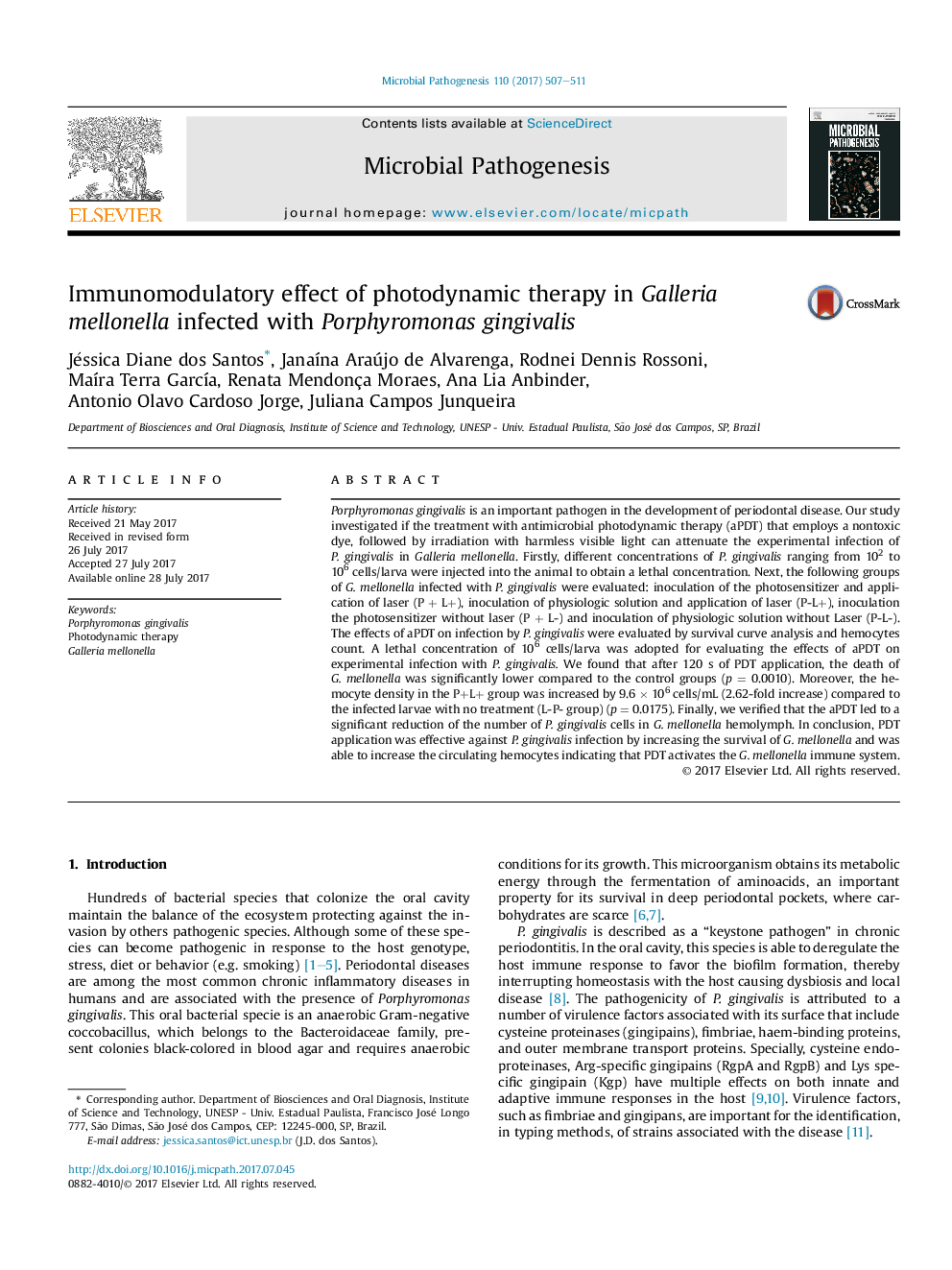| کد مقاله | کد نشریه | سال انتشار | مقاله انگلیسی | نسخه تمام متن |
|---|---|---|---|---|
| 5673705 | 1593679 | 2017 | 5 صفحه PDF | دانلود رایگان |

- Porphyromonas gingivalis is able to cause lethal infection in Galleria mellonella.
- Photodynamic therapy (PDT) activates the G. mellonella immune system.
- G. mellonella is suitable to perform PDT-based protocols in periodontal pathogens.
Porphyromonas gingivalis is an important pathogen in the development of periodontal disease. Our study investigated if the treatment with antimicrobial photodynamic therapy (aPDT) that employs a nontoxic dye, followed by irradiation with harmless visible light can attenuate the experimental infection of P. gingivalis in Galleria mellonella. Firstly, different concentrations of P. gingivalis ranging from 102 to 106 cells/larva were injected into the animal to obtain a lethal concentration. Next, the following groups of G. mellonella infected with P. gingivalis were evaluated: inoculation of the photosensitizer and application of laser (P + L+), inoculation of physiologic solution and application of laser (P-L+), inoculation the photosensitizer without laser (P + L-) and inoculation of physiologic solution without Laser (P-L-). The effects of aPDT on infection by P. gingivalis were evaluated by survival curve analysis and hemocytes count. A lethal concentration of 106 cells/larva was adopted for evaluating the effects of aPDT on experimental infection with P. gingivalis. We found that after 120 s of PDT application, the death of G. mellonella was significantly lower compared to the control groups (p = 0.0010). Moreover, the hemocyte density in the P+L+ group was increased by 9.6 Ã 106 cells/mL (2.62-fold increase) compared to the infected larvae with no treatment (L-P- group) (p = 0.0175). Finally, we verified that the aPDT led to a significant reduction of the number of P. gingivalis cells in G. mellonella hemolymph. In conclusion, PDT application was effective against P. gingivalis infection by increasing the survival of G. mellonella and was able to increase the circulating hemocytes indicating that PDT activates the G. mellonella immune system.
Journal: Microbial Pathogenesis - Volume 110, September 2017, Pages 507-511